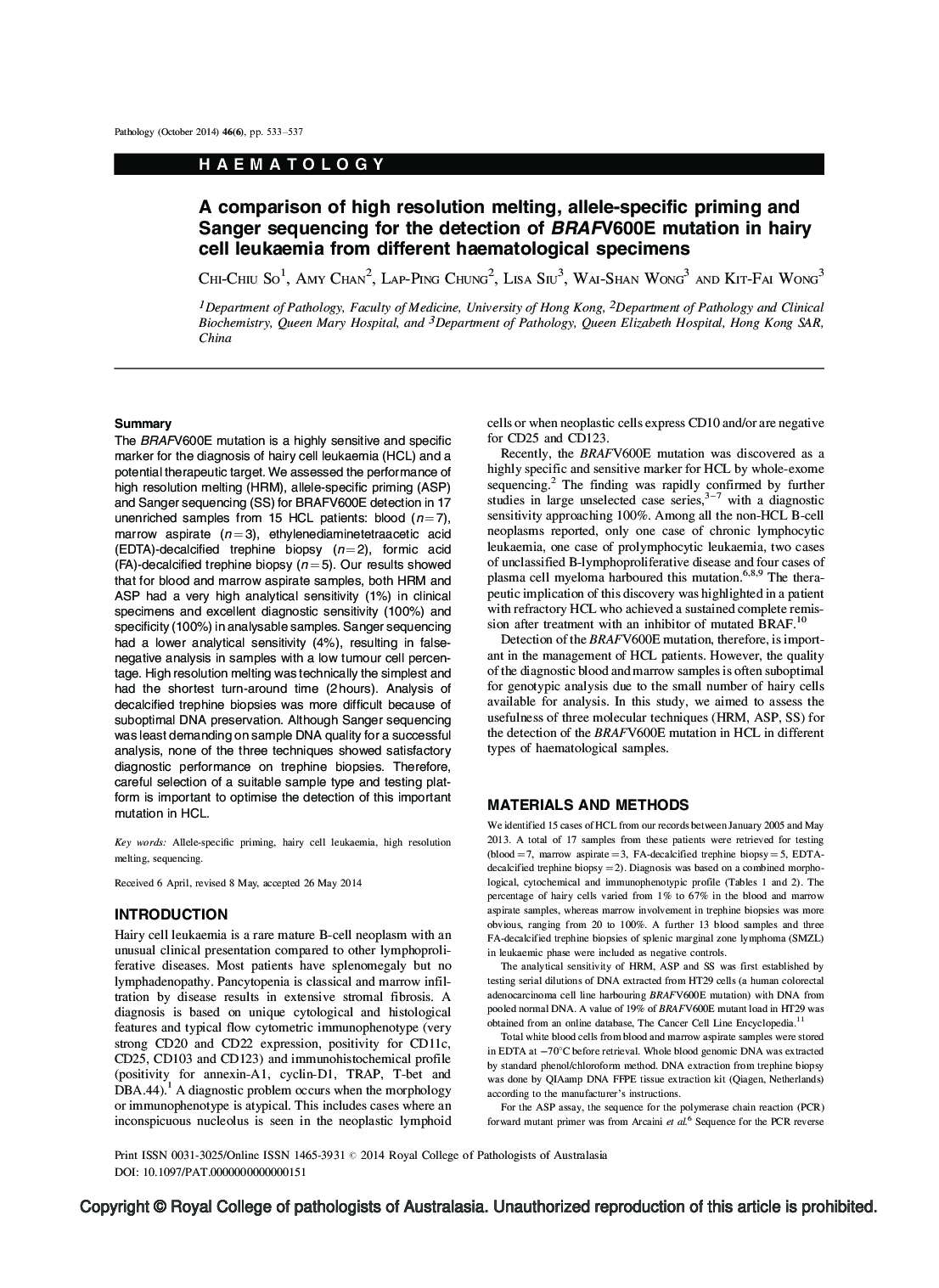| Article ID | Journal | Published Year | Pages | File Type |
|---|---|---|---|---|
| 10255083 | Pathology | 2014 | 5 Pages |
Abstract
The BRAFV600E mutation is a highly sensitive and specific marker for the diagnosis of hairy cell leukaemia (HCL) and a potential therapeutic target.We assessed the performance of high resolution melting (HRM), allele-specific priming (ASP) and Sanger sequencing (SS) for BRAFV600E detection in 17 unenriched samples from 15 HCL patients: blood (n = 7), marrow aspirate (n = 3), ethylenediaminetetraacetic acid (EDTA)-decalcified trephine biopsy (n = 2), formic acid (FA)-decalcified trephine biopsy (n = 5). Our results showed that for blood and marrow aspirate samples, both HRM and ASP had a very high analytical sensitivity (1%) in clinical specimens and excellent diagnostic sensitivity (100%) and specificity (100%) in analysable samples. Sanger sequencing had a lower analytical sensitivity (4%), resulting in falsenegative analysis in samples with a low tumour cell percentage. High resolution melting was technically the simplest and had the shortest turn-around time (2 hours). Analysis of decalcified trephine biopsies was more difficult because of suboptimal DNA preservation. Although Sanger sequencing was least demanding on sample DNA quality for a successful analysis, none of the three techniques showed satisfactory diagnostic performance on trephine biopsies. Therefore, careful selection of a suitable sample type and testing platform is important to optimise the detection of this important mutation in HCL.
Related Topics
Health Sciences
Medicine and Dentistry
Forensic Medicine
Authors
Chi-Chiu So, Amy Chan, Lap-Ping Chung, Lisa Siu, Wai-Shan Wong, Kit-Fai Wong,
